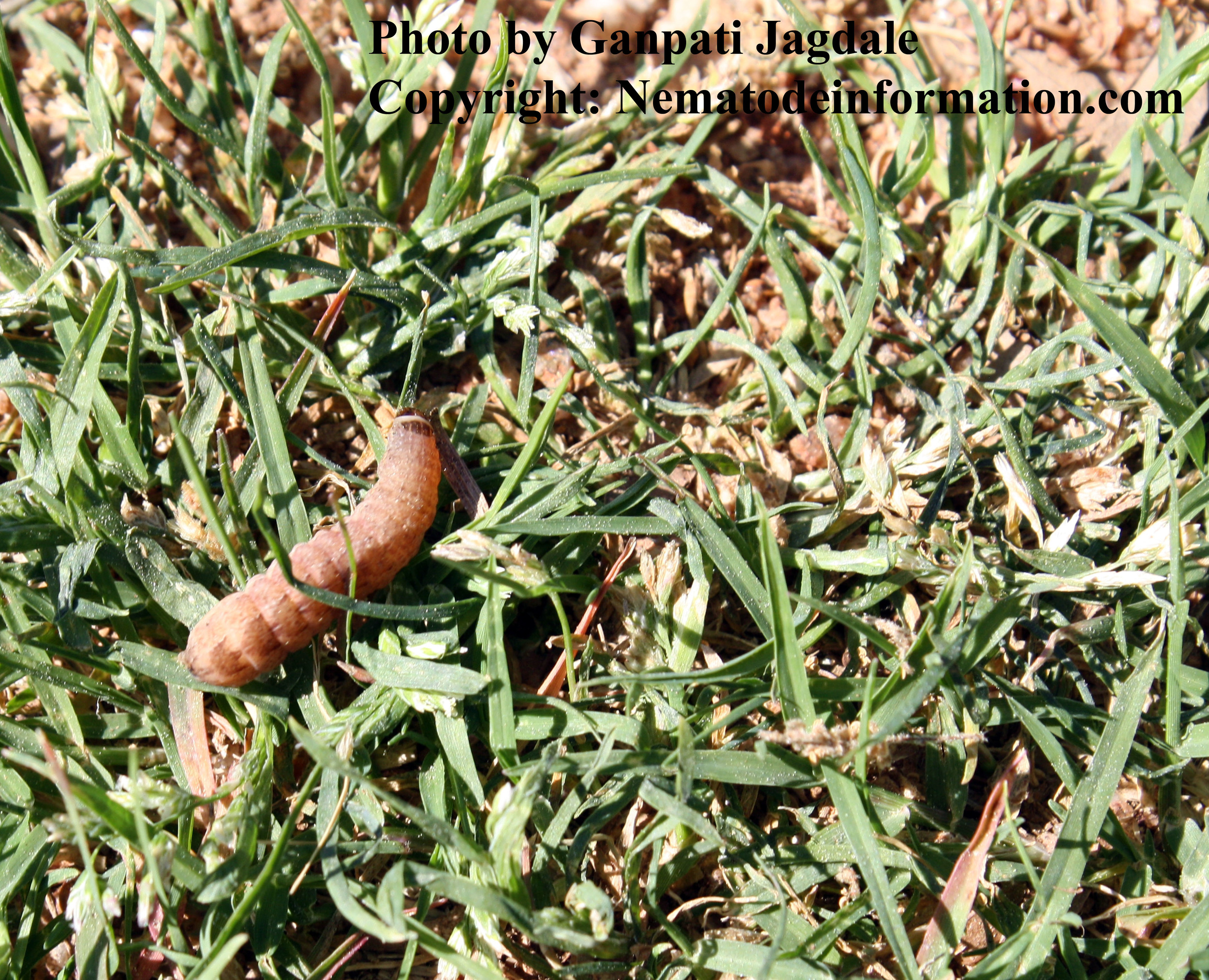Control of cutworms with entomopathogenic nematodes- Nematode information
Cutworms are foliage feeding pest of turfgrass. Moths of turfgrass cutworms emerge from overwintering pupae early in the spring and after mating they start laying about 1000-1200 eggs at tip of grass blades. Depending upon the temperature, eggs hatch within 10-12 days. After hatching from eggs, caterpillars (see photo of caterpillar) start feeding on turfgrass leaves and stems at night and hide under thatch during day time. During development all the stages (six instars) of caterpillars cause damage by cutting and chewing leaves and stems at the crown of turfgrasss until late summer completing 3-6 generations.
Entomopathogenic nematodes including Steinernema carpocapsae and Heterorhabditis bacteriophora have been proved to be effective when applied at rate of one billion nematode per acre. It is always advised to apply nematodes late in the evening to avoid exposure to UV light, which is detrimental to nematodes.
